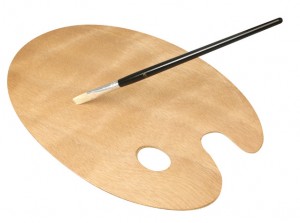Blend paint colors like a pro
Other ways to blend paint colors
Color triad. You can create a color triad when you choose three shades that are 120 degrees apart on the color wheel. This color scheme is an attention-getting combination. If you want to try this approach, consider choosing one color in your palette to be the primary color, and use the remaining two as accent colors. You can get a wider range of color options by varying the saturation of the colors in the palette.
Color square. Similarly to complements and triads, you can create a color square by using four evenly spaced colors on the color wheel. Each color will be 90 degrees apart. You’ll essentially be using two sets of complementary colors. This approach gives you a lot of way to blend paint colors, but it introduces a little wrinkle: you can end up with a palette that contains both warm and cool colors. As with other multi-color paint schemes, you’ll be happiest by choosing one primary color and using the rest of the palette as accents.
Color rectangle. A color rectangle also uses two sets of complementary colors, but they’re not evenly spaced on the color wheel. To create this palette, choose a primary color and its complement. Then choose a color that is 60 degrees away from your primary color and that color’s complement. You’ll be able to extend your options to blend paint colors by varying the saturation of the colors in your basic palette. Balance isn’t the key here – use one primary color and use the rest to create accents.
You won’t get much more by adding more colors to your palette, although you can. If you want to blend paint colors, the key is to remember to balance the colors in your palette with their complements and keep the colors predictably spaced on the color wheel.
If you’d like more information about how you can blend paint colors, or use glass paint in a paint project, please check out the rest of our site. If you’re ready to shop for glass paint, please visit our online store.
Photo Credit: Joerg Rudloff, via FreeImages.com

